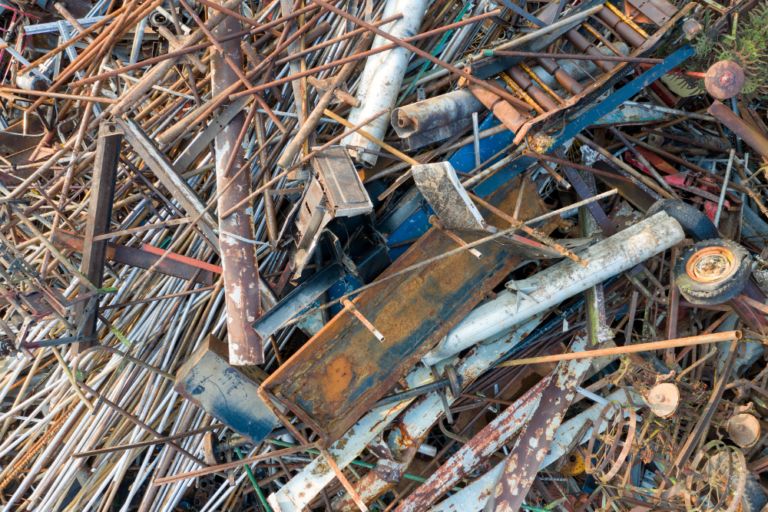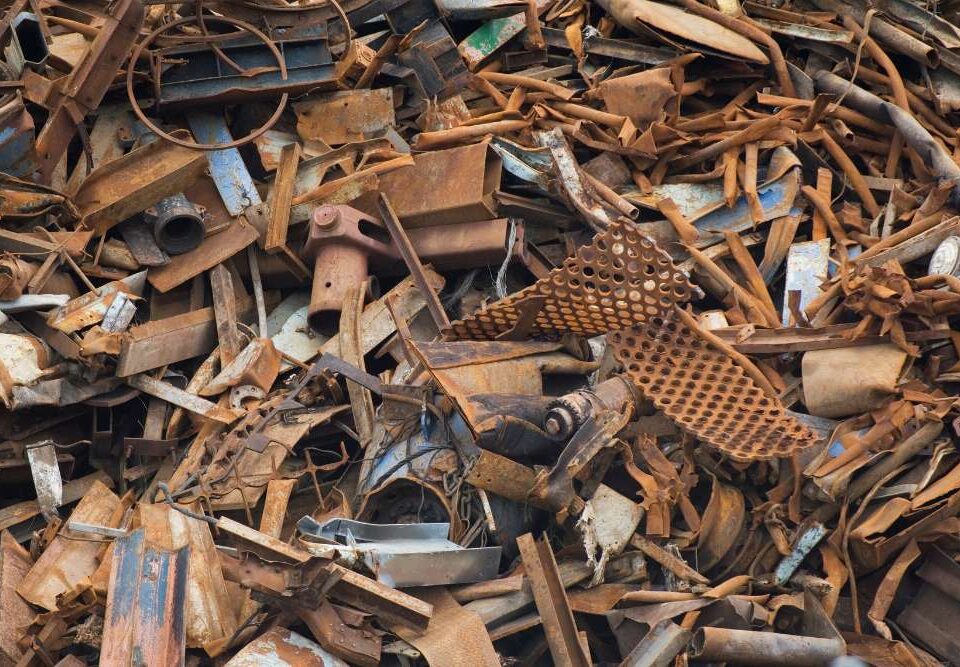
Mattress Removal for Better Sleep Hygiene
August 8, 2025
Residential Junk Removal: What to Keep and What to Toss
August 8, 2025Best Practices for Recycling During Junk Removal
Understanding What Can Be Recycled
Proper recycling starts with understanding which items can safely enter the recycling stream. Household items like cardboard, paper, glass bottles, and specific plastics can usually be recycled. Electronics and appliances, however, require specialized handling to prevent hazardous materials from entering landfills. Knowing the rules in your local area ensures materials are processed efficiently and reduces contamination, which can otherwise render entire batches of recyclables unusable. Taking the time to sort junk before removal not only aids the environment but can streamline the process for recycling centers. This preparation often saves time and prevents last-minute sorting during the pickup process, making the experience smoother for everyone involved.
By categorizing items carefully, recyclables can be kept separate from trash, hazardous waste, and items suitable for donation. Labeling boxes clearly and keeping small components together helps recycling facilities identify materials quickly. Items that are partially recyclable, like mixed-material packaging, may require separating components to increase the chances of successful recycling. This careful approach supports the larger goal of reducing landfill waste while ensuring valuable materials like metals and plastics get a second life in new products.
Reducing Contamination in Recycling
Keeping recyclables uncontaminated is crucial to successful processing. Food residue on containers, sticky adhesives, and non-recyclable plastics can compromise large batches of materials. A quick rinse of bottles, cans, and jars helps avoid contamination and ensures they remain usable for recycling. Avoiding bagging recyclables in plastic bags is also recommended, as many recycling systems cannot handle them. By maintaining cleanliness and proper separation, you help recycling facilities operate efficiently and reduce the likelihood of recyclables being diverted to landfills.
Education about contamination goes beyond personal habits; when junk removal teams follow proper procedures, the impact is multiplied. Professionals trained in recycling protocols can quickly identify what can and cannot be recycled, reducing mistakes and ensuring that items reach the right destination. Community awareness campaigns and clear labeling further empower homeowners to participate responsibly, turning every junk removal opportunity into a chance to benefit the environment sustainably.
Electronic Waste Recycling Tips
Electronic waste, or e-waste, requires particular attention during junk removal. Devices such as computers, printers, and televisions often contain hazardous substances like lead and mercury. Safely handling and transporting these items ensures toxic components do not harm the environment. Many communities provide designated drop-off points or specialized pickup services for e-waste, making it easier to dispose of these items responsibly. Separating cords, batteries, and devices before removal can simplify the process for recycling centers.
Additionally, many e-waste items can be refurbished or repurposed. Donating working electronics or participating in buy-back programs allows devices to extend their life and reduces demand for raw materials. Even non-working electronics can yield valuable metals when properly processed. Awareness of local e-waste regulations and opportunities ensures that discarded electronics contribute to a circular economy rather than polluting landfills.

Furniture and Appliance Recycling
Furniture and large appliances can present challenges during junk removal, but recycling them is achievable with planning. Wooden furniture may be repurposed or broken down for mulch or biofuel. Metal components from appliances and furniture can be separated and sent to scrap metal recycling facilities. When donating usable items, ensure they are in good condition and suitable for reuse to maximize environmental benefits. Some local programs even accept items with minor damage, reducing waste while supporting charitable causes.
For appliances, removing doors, shelves, and other detachable components helps streamline recycling. Certain appliance parts like compressors, insulation, and wiring require specialized handling due to environmental regulations. Collaborating with junk removal services that understand these requirements ensures that recyclable elements are recovered safely. By committing to proper disposal and recycling practices, homeowners play a crucial role in diverting materials from landfills and conserving resources.
Handling Hazardous Materials Safely
Junk removal often uncovers hazardous materials like paints, chemicals, or cleaning agents. These items cannot enter standard recycling streams due to safety risks. Proper disposal methods involve taking them to designated hazardous waste collection facilities. Labeling containers clearly and keeping incompatible chemicals separated reduces the risk of accidents. By responsibly handling hazardous materials, homeowners protect their health, the community, and the environment during junk removal projects.
Professional junk removal services often provide guidance on handling these materials safely. They may assist in identifying hazardous substances and advising on local drop-off locations. Awareness of hazardous waste protocols ensures compliance with environmental regulations and promotes a culture of responsible disposal. Taking the time to manage these materials correctly prevents contamination of recyclables and supports a safer, cleaner community overall.
Maximizing Donations
Items that are still in usable condition can often be donated rather than recycled. Clothing, toys, furniture, and certain electronics can benefit local charities, schools, or community programs. Properly cleaning and organizing donated items increases their usability and ensures they are welcomed by recipient organizations. Donation not only extends the life of items but also contributes to community well-being while reducing landfill impact.
Coordinating with junk removal teams to identify donation-appropriate items can streamline the process. Some services offer direct transport to donation centers, saving time and simplifying logistics. By focusing on reuse before recycling or disposal, homeowners enhance the environmental and social value of their decluttering efforts. This approach integrates sustainability with community support, turning junk removal into a meaningful act beyond simply clearing space.
Sorting and Storing Materials Efficiently
Effective sorting and temporary storage of recyclables during junk removal is key to preventing mix-ups and maximizing recycling rates. Grouping similar materials together, using sturdy containers, and keeping items dry helps maintain quality. Avoiding overstuffed boxes and labeling each container clearly ensures that recyclables are not contaminated or damaged before reaching processing centers. Storage should be convenient for both homeowners and junk removal teams to maintain workflow efficiency.
Efficient sorting also benefits long-term recycling practices. Homeowners can set up designated areas for specific materials and use reusable containers, fostering habits that persist beyond a single junk removal event. When combined with scheduled pickups and professional guidance, organized storage supports continuous recycling efforts. The more deliberate the approach, the higher the recovery rate of valuable materials and the lower the environmental impact.
Transportation Considerations
Transporting recyclables safely is an often-overlooked part of junk removal. Vehicles should be equipped to handle weight safely and prevent shifting during transport. Keeping materials covered or secured protects them from weather damage. For hazardous items, specialized containment may be necessary to comply with safety regulations. Planning routes to recycling centers or donation facilities in advance can reduce fuel consumption and streamline operations, making the removal process more environmentally friendly.
Proper loading techniques also minimize damage to recyclables and ensure efficiency. Separating heavier items from lighter ones prevents breakage and maintains the integrity of materials like glass or electronics. When junk removal teams consider transportation logistics carefully, they enhance both safety and recycling outcomes. Thoughtful planning transforms the simple act of hauling away junk into a responsible environmental practice.
Encouraging Community Participation
Promoting community awareness about recycling during junk removal can have a lasting impact. Informing neighbors about proper disposal methods, local recycling programs, and donation opportunities increases participation and collective environmental benefits. Community workshops or social media campaigns can educate residents about reducing contamination, sorting materials correctly, and using professional services responsibly.
Engaging community members also fosters a culture of sustainability. When neighbors see the positive effects of responsible junk removal, they are more likely to follow suit. Collaborative efforts, like neighborhood clean-up days, can amplify results and make recycling efforts more effective. Collective action ensures that recycling practices extend beyond individual homes, strengthening environmental stewardship throughout the area.
Staying Informed on Recycling Regulations
Recycling regulations can change frequently, so staying informed is essential for effective junk removal. Local guidelines dictate which materials are accepted, how they must be prepared, and any limitations on quantities. Homeowners should regularly check municipal websites or contact recycling centers for updated instructions. Understanding the latest rules ensures compliance and maximizes the efficiency of recycling efforts.
Keeping up with regulations also helps prevent accidental disposal of prohibited items. Junk removal teams that are knowledgeable about local rules can guide homeowners, reducing the risk of fines or contamination. Staying informed allows recycling to be both responsible and effective, transforming junk removal from a routine chore into a conscientious environmental practice.
Prioritizing Environmental Responsibility
Every decision made during junk removal can impact the environment, from the choice to donate to the method of recycling. Prioritizing eco-friendly practices reduces landfill waste, conserves natural resources, and supports sustainable industries. Small actions, like separating materials, rinsing recyclables, and choosing professional services that emphasize recycling, collectively make a significant difference. Environmental responsibility should be at the core of every junk removal project.
By incorporating sustainability into daily habits and junk removal routines, homeowners contribute to a greener community. Professionals play a supportive role by ensuring that materials are properly processed and disposed of according to environmental standards. Combining individual effort with professional expertise creates a system where responsible junk removal becomes routine. The result is a cleaner, safer, and more sustainable living environment for everyone.
Conclusion
When tackling junk removal projects, following best practices for recycling transforms the experience from a simple cleanup into a meaningful contribution to environmental sustainability. By understanding which items can be recycled, handling hazardous materials responsibly, and maximizing donations, every homeowner can significantly reduce landfill impact. Proper sorting, storage, and transport practices ensure that materials reach their intended destinations efficiently, enhancing the value of recycling efforts and reinforcing eco-friendly habits.
For residents and businesses looking for professional assistance, North Bay Junk Removal in Santa Rosa, CA offers comprehensive junk removal services. Their team can guide homeowners through recycling protocols, manage pickups, and ensure that items are handled responsibly. With a focus on environmental stewardship and customer satisfaction, North Bay Junk Removal can help you clear space while making a positive impact. Call them today at 707-478-6817 to schedule a pickup and experience a junk removal service that prioritizes both efficiency and sustainability.




